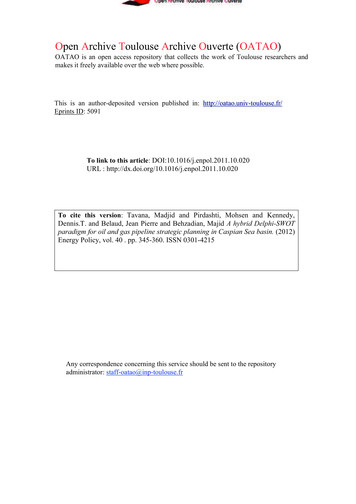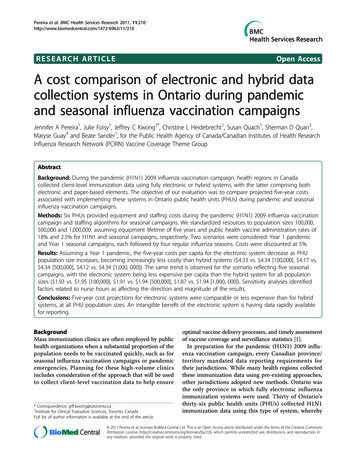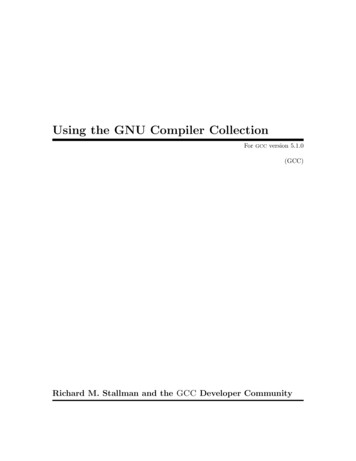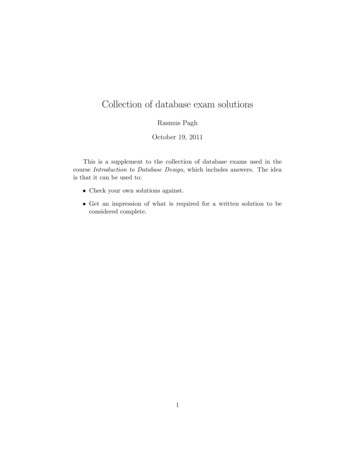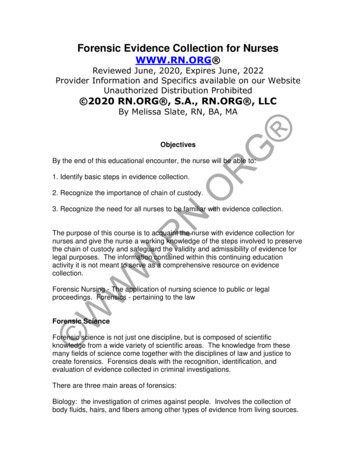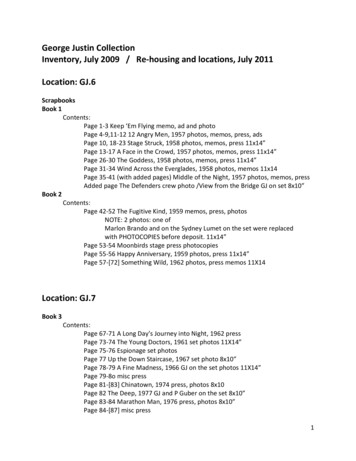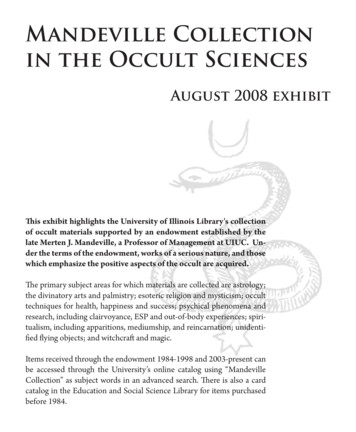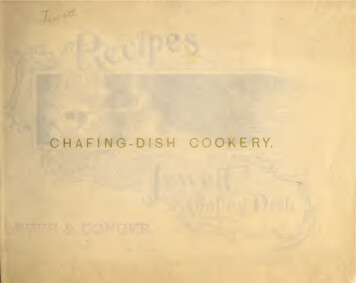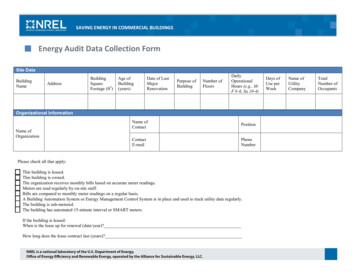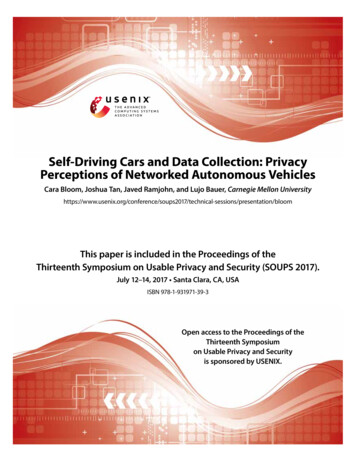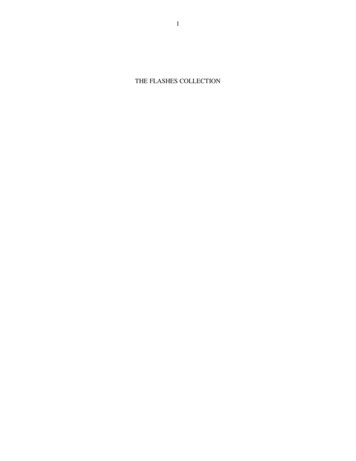
Transcription
1THE FLASHES COLLECTION
2
3From theRisale-i NurCollectionThe FlashesCollectionBediuzzamanSaid Nursi
4Translated from the Turkish ‘Lem’alar’by Şükran Vahide2009 Edition.Copyright 2009 by Sözler Neşriyat A.Ş.All rights reserved. This book may not be reproduced by any meansin whole or in part without prior written permission.For information, address:Sözler Neşriyat A.Ş., Nuruosmaniye Cad., Sorkun Han, No: 28/2,Cağaloğlu, Istanbul, Turkey.Tel: 0212 527 10 10; Fax: 0212 520 82 31E-Mail: info@sozler.com.trInternet: www.sozler.com.tr
5ContentsTHE FIRST FLASH: An instructive explanation of the verse, “But he cried throughthe depths of the darkness ” the famous supplication of the Prophet Jonah(UWP), showing its relevance for everyone.17THE SECOND FLASH: The famous supplication of the Prophet Job (UWP),“When he called upon his Sustainer saying: ‘Verily harm has afflicted me ’” isexpounded in five points, providing a true remedy for the disaster-struck.21THE THIRD FLASH: Three points expounding with the phrases “The Eternal One,He is the Eternal One!” two important truths contained in the verse, “Everythingshall perish save His countenance ” 30THE FOURTH FLASH: The Highway of the Practices of the Prophet (UWBP).This solves and elucidates with complete clarity one of the major points ofconflict between the Sunnis and the Shi‘a, the question of the Imamate, andexpounds two important verses in four points. 35THE FIFTH FLASH is included in the Twenty-Ninth Flash.THE SIXTH FLASH is also included in the Twenty-Ninth Flash.THE SEVENTH FLASH: This describes seven predictions about the Unseen in thethree final verses of Sura al-Fath. Its Postscript describes a further example ofthis aspect of the Qur’an’s miraculousness in the verses “All who obey God andHis Messenger ” While the Conclusion demonstrates a clear example of anotheraspect of its miraculousness, ‘coincidences.’. 46THE EIGHTH FLASH is published in Sikke-i Tasdik-i Gaybî (The Ratifying Stampof the Unseen) and hand-duplicated editions of Lem’alar (The FlashesCollection), and is not included in the present collection.
6THE NINTH FLASH: The answers to four questions asked by Bediuzzaman’sstudent, Hulûsi Bey: 58The First concerns his descent from the Prophet (UWBP).59The Second points out with brilliant clarity the way of the Unity of Existence andhow it is in error.59The Third concerns the science of jafr.62The Fourth is about Jesus (UWBP) having a human father.63Finally is an Addendum to the question about Ibn al-‘Arabi and the Unity ofExistence.66THE TENTH FLASH: Fourteen Blows dealt by Divine Compassion received bystudents of the Risale-i Nur in their service of the Qur’an, for errors they havemade due to human nature.70THE ELEVENTH FLASH: Entitled The Stairway of the Practices of the Prophetand Antidote for the Sickness of Innovations, this important treatise consistsof eleven points about the Sunna of God’s Messenger (UWBP).81THE TWELFTH FLASH: Two verses are explained which have been challengedand criticized by scientists:The First explains in two points that all sustenance is bestowed directly by theAll-Powerful One, from the treasury of His mercy. 95The Second proves in two important matters, the first consisting of four points,that the earth has seven levels in seven respects, as the heavens consist of sevenlevels. 98THE THIRTEENTH FLASH: This explains, through thirteen indications, themeaning of the phrase: “I seek refuge with God from Satan the Accursed.” 104THE FOURTEENTH FLASH consists of two stations:First Station: In reply to the First Question, which is about the earth resting on aBull and a Fish, this sets out three important principles for the understanding ofHadiths. 128The Second Question is about the People of the Cloak. 132Second Station: This important piece expounds six mysteries contained in theverse “In the Name of God, the Merciful, the Compassionate.”134THE FIFTEEN FLASH: The indexes of Sözler (The Words), Mektûbat (Letters),and Lem’alar (The Flashes Collection), from the First to the Fifteenth Flashes.They are included in the relevant volumes.
7THE SIXTEENTH FLASH: The answers to various questions:The First: A relief from difficulties was predicted during Ramadan by those whodivine the realities, why did it not come about?143The Second: Why did the author of the Risale-i Nur not oppose those who wereoppressing him? 144The Third: Why did he oppose war, although with foreign forces interfering in thegovernment, it would have excited Islamic zeal?145The Fourth: Why did he advise his students to be cautious and not to show allparts of the Risale-i Nur to everyone? 145Conclusion: The reply to a question about the Prophet’s (UWBP) beard.147The answers to three further matters, disputed by atheists:The First: Dhu’l-Qarnayn “saw the sun setting in a spring of murky water.”148The Second: Where is the Barrier of Dhu’l-Qarnayn? Who were Gog and Magog?149The Third is about Jesus (PUH) coming at the end of time and killing the Dajjal.151A reply about two of the Five Hidden Things.152The reply to a question about man’s ten subtle faculties. 155THE SEVENTEENTH FLASH consists of fifteen notes taken from Bediuzzaman’swork entitled Zühre:. 157The First Note shows the reality of those things which captivate the human soul,severance from which turns man’s face to eternity. 158The Second Note describes the Qur’anic principle of humility. 158The Third Note illustrates with a comparison the true face of death and life.159The Fourth Note demonstrates that as it is generally the divine practice to restoreand return things exactly the same, man, the perfect fruit of the universe, will bereturned at the Last Judgement. 159The Fifth Note reveals by means of a comparison with Qur’anic guidance, the trueface of Western civilization. Making believers feel repugnance towards it, thisNotes offers remedies from the pharmacy of the Qur’an.160
8The Sixth Note unmasks the satanic wile of shaking believers in their faith due tothe numerous unbelievers and their agreement in denying some of the truths ofbelief. 166The Seventh Note silences those pseudo-patriots who drive Muslims towardsWestern-type progress, greed, and worldly ambition, and offers Qur’anic cures toany looking towards apostasy or who have fallen into sin.168The Eighth Note demonstrates how in His munificence, Almighty God hasincluded a reward and pleasure in all activity and striving. 170The Ninth Note explains that the Prophets contain the reality of man, the seed of theuniverse, and that by following them in worship, man may attain to perfectionand happiness. The phrase “God is Most Great!” repeated in the Friday andFestival Prayers is as though uttered by the globe of the earth.174The Tenth Note: Three sorts of evidences and proofs of knowledge of God, andthe correct approaches to these. 175The Eleventh Note points out the compassion in the Qur’an’s manner of address,and its naturalness.176The Twelfth Note: A supplication illustrating a meaning of the Hadith “Die beforeyou die” 177The Thirteenth Note: Five matters that have been the cause of confusion:The First: Strivers in the way of truth should think only of their own duties andnot meddle in God’s concerns. 178The Second: Worship of God should look only to the divine command and divinepleasure. 180The Third: On the meaning of “Happy is the man who knows his limits and doesnot exceed them.”180The Fourth explains that it is not permissible to accept bounties not given in theTrue Bestower’s name, and demonstrates the true nature of apparent causes. 182The Fifth: The achievements of a community should not be ascribed to its leaderor master.183The Fourteenth Note consists of four signs alluding to divine unity:First Sign: Man’s true object of worship and place of recourse can only be theOne whose rule extends over the earth and the heavens.184
9Second Sign: Man’s intense innate love of immortality should be not for themirror of his being, but for the manifestation of the Enduring One of Glory inthe mirror.185Third Sign: The tip of a vast truth warning man, for although he is created with acapacity suitable to eternal life, he sometimes becomes entrapped in minutematters, due to the caprice of the soul. 185Fourth Sign: Worldly life and the life of the flesh are like a narrow grave. Onentering the life of the heart and spirit, one enters a broad sphere of life, and thekey to this world is “There is no god but God!”186The Fifteenth Note depicts the maximum manifestation of the divine name ofPreserver.187THE EIGHTEENTH FLASH has been published in Sikke-i Tasdik-i Gaybî (TheRatifying Stamp of the Unseen) and in hand-duplicated editions of Lem’alar(The Flashes).THE NINETEENTH FLASH: On Frugality. Seven points expounding the verse“Eat and drink, but waste not in excess”.189THE TWENTIETH FLASH: On Sincerity. Seven causes of the awesome situationindicated by the question: “What is the reason for the conflict among the peopleof truth while the misguided and worldly co-operate without rivalry? 200THE TWENTY-FIRST FLASH: On Sincerity. Four rules whereby one may gainand preserve sincerity, the most important principle in works pertaining to thehereafter.213A Confidential Letter to Some of My Brothers.222THE TWENTY-SECOND FLASH consists of three indications, which comprisequestions about the Risale-i Nur’s author, and their answers: 223First Indication: Why do the worldly meddle in your hereafter, although you donot meddle in their world, and the law does not interfere with recluses?224Second Indication: Why do you not apply to us? One who applies the law is not atyrant. Through attracting attention, you oppose our principles of absoluteequality. 225Third Indication: Why do you elude our republican laws under the cloak of beinga recluse? Why do you assume the position of someone special?227
10Conclusion: An astonishing assault.230THE TWENTY-THIRD FLASH: On Nature.232Introduction: Three phrases, representing three ways, used by believers about theexistence of things without realizing their implications:233The First Way: The formation of things through the coming together of causes inthe universe.First Impossibility: The coming together by chance of the elements of livingbeings in perfect measure and balance. 234Second Impossibility: If a fly, for example, is attributed to causes, it necessitatesthat many of the elements and causes in the universe intervene physically in itsbeing. 235Third Impossibility: “If a being has unity, it can only have issued from onehand,” particularly if it manifests life, together with perfect order and balance.236The Second Way: “It forms itself.”First Impossibility: The body resembles a finely ordered machine; if its particlesare not working in accordance with the divine law, each would have to possessabsolute attributes.236Second Impossibility: The particles of a living body stand together in perfectbalance and order; if they are not dependent on the master architect of theuniverse, each would have to be both dominant over all the others andsubordinate to them. 237Third Impossibility: If your being is not ‘written’ by the pen of the All-PowerfulOne, but ‘printed’ by nature and causes, there would have to be printing-blocksin nature to the number of cells in your body 238The Third Way: “Nature necessitates it and makes it.”First Impossibility: If animate creatures are not ascribed directly to themanifestation of the Pre-Eternal Sun, each has to be a god with infiniteattributes.239Second Impossibility: If attributed to nature, there would have to present in eachbit of soil the means by which innumerable flowers and fruits could grow andbe formed.239Third Impossibility: Two comparisons:The First: A wild savage enters a palace adorned with all the fruits ofcivilization.242
11The Second: A rustic bumpkin enters the bounds of a splendid palace and seesthe soldiers at their drill.243Conclusion: Three questions and their answers.The First: What need does God have of our worship, so that He severelyreproves those who give up worship? 248The Second: What is the secret in the ease in the creation and formation ofthings? 249The Third: Philosophers say there is only composition and decomposition. Is thiscorrect? 252THE TWENTY-FOURTH FLASH: The Qur’an enjoins the veiling of women. Fourinstances of wisdom in this.254A Conversation with the Women, My Believing Sisters of the Hereafter: Threepoints showing that since compassion is one of the chief principles of theRisale-i Nur and women are champions of compassion, they are by naturedrawn to it.259THE TWENTY-FIFTH FLASH: Message for the Sick. This consists of twentyfive remedies. 265THE TWENTY-SIXTH FLASH: Treatise for the Elderly. This consists of twentysix hopes.285THE TWENTY-SEVENTH FLASH: The defence speeches from the Eskişehirtrials, which have been published in hand-duplicated editions of The FlashesCollection, and in part in Bediuzzaman’s biography.THE TWENTY-EIGHTH FLASH consists of short pieces written in EskişehirPrison:A Small Point Concerning an Important Verse: Hitherto unknown instances ofwisdom in the creation of flies, and other creatures. 337Some aspects of the element of air, the throne of the divine will and command, andthe Disjointed Letters at the start of some of the Qur’an’s Suras.342A discussion about divine speech and its infinity. 345An explanation of why the verse “And We sent down iron.” is phrased in thisway.348The same point explained in connection with the verse “And He sent down for youeight head of cattle”. 351Pieces written in Eskişehir Prison as a true solace for the Risale-i Nur students. 353
12A Rule353A Short Piece355Part of My Defence Speech355An explanation of the verse “But when they forgot the warning they had received”.358A Warning – two short stories359A piece which may benefit everyone, in two points. First Point, the immediatereward present in good works. 361Second Point: Two verses whose meaning is not immediately apparent. 362The
The Fourth: Why did he advise his students to be cautious and not to show all parts of the Risale-i Nur to everyone? 145 Conclusion: The reply to a question about the Prophet’s (UWBP) beard. 147 The answers to three further matters, disputed by atheists: The First: Dhu’l-Qarnayn “saw the sun setting in a spring of murky water.” 148

